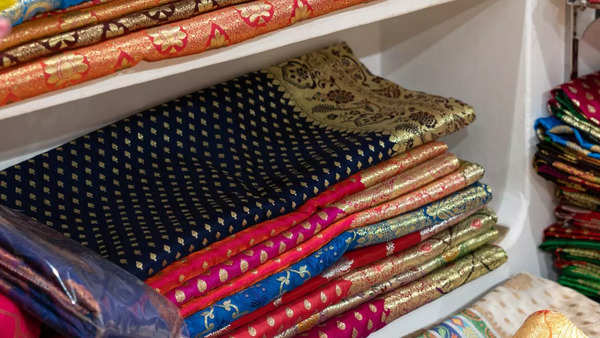From Vedic Times to Mughal Patronage
The origins of this enchanting textile can be traced back to ancient times, when Varanasi served as a pivotal hub along the historic Silk Road. This geographical advantage allowed for a confluence of cultures and craftsmanship, with Persian aesthetics intertwining with indigenous Indian artistry. The result was a creation of a fabric that bore testament to the confluence of cultures—a motif that remains integral to the Benarasi Silk’s identity.
As the Mughal era dawned upon the Indian subcontinent during the 16th century, Benarasi Silk found itself entwined with the regal courts and luxurious lifestyle of the ruling elite. The patronage of emperors and empresses provided an impetus for its refinement and innovation. Under the Mughals, the fabric gained prominence as a symbol of opulence and grandeur, favored for its intricate patterns, delicate craftsmanship, and rich texture.
The Mughals patronized Benarasi Silk and it evolved with the Persian aesthetics that were incorporated into it.
One of the most iconic aspects of this textile is the exquisite weaving technique that culminates in its opulent patterns. The master weavers, whose skills are honed over generations, employ traditional handlooms to create intricate motifs that often draw inspiration from nature, mythology, and geometric designs. Each thread is meticulously woven, reflecting the interplay between light and shadow that lends the fabric its characteristic depth and luster.
Colonial Times to Present Day
As time unfurled its tapestry, the British colonial period in the 18th and 19th centuries witnessed a subtle transformation in the Silk’s trajectory. The colonial presence influenced the market, demanding fabrics that catered to evolving sensibilities. Adaptation ensued, with European motifs and designs seamlessly integrated into the fabric’s traditional charm. The fabric’s enduring appeal continued to captivate, evolving to accommodate the changing tides of fashion while preserving its timeless allure.

Benarasi Silk: a testament to the resilience of heritage craftsmanship
In the present day, the legacy of Benarasi Silk stands as a testament to the resilience of heritage craftsmanship. The intricacies of weaving techniques, the fusion of tradition with innovation, and the dedication of artisans have culminated in a fabric that continues to be the epitome of luxury. It graces bridal trousseaus, formal attire, and ceremonial occasions with an unparalleled touch of elegance.
The allure of this home-grown textile extends beyond its visual appeal—it resonates with stories and traditions passed down through generations. It embodies the enduring spirit of Varanasi, a city that has witnessed the ebb and flow of history, yet stands as a beacon of cultural vibrancy. The fabric remains an homage to the artisans who have safeguarded their ancestral craft, enriching it with every thread woven.
As the threads of time continue to weave their intricate pattern, Benarasi Silk remains an indelible mark on the landscape of fashion and craftsmanship. Its journey, marked by the evolution of cultures and traditions, encapsulates the essence of a timeless tale—of artistry, heritage, and the evergreen elegance that transcends generations.
